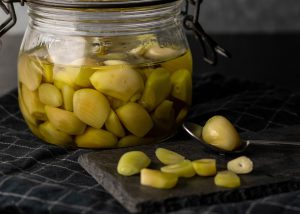In my simple, vegan recipe for wild garlic kimchi, I combine Korean kimchi with local foraged wild garlic. A fantastic flavour combination. A great snack and a great little side dish for many meals!
In this recipe I’ll also explain the basics of lactofermentation. As a good foundation that can be used for many ferments.
If it’s not wild garlic season, I recommend my vegan recipe for classic, traditional kimchi.

What exactly is kimchi?
Kimchi is a traditional Korean dish made from fermented vegetables. It primarily uses Chinese cabbage and Korean radish. It is a type of pickled vegetable that, like German sauerkraut, acquires a unique flavour through lactic acid fermentation. However, the various ingredients and special seasoning give kimchi a very complex flavor.
In Korea, kimchi has a deep-rooted cultural significance and is often considered a symbol of health, prosperity, and happiness.
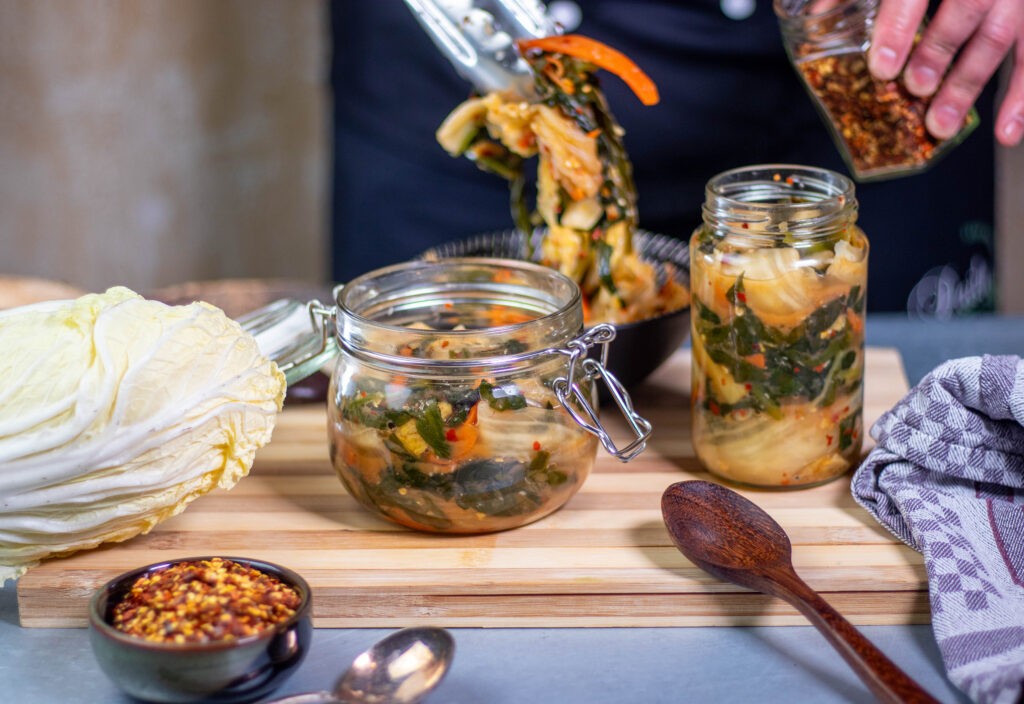
Wild Garlic Kimchi: Traditional Kimchi Combined with Wild Garlic
In my recipe, I prepare a vegan kimchi that I combine with wild garlic. I’ve made this kimchi recipe relatively mild, both in terms of spiciness and fermentation. This brings out the flavour of the wild garlic. The flavour of the fermented wild garlic adds an additional, exciting note to the kimchi, which blends beautifully and offers a unique kimchi taste experience.
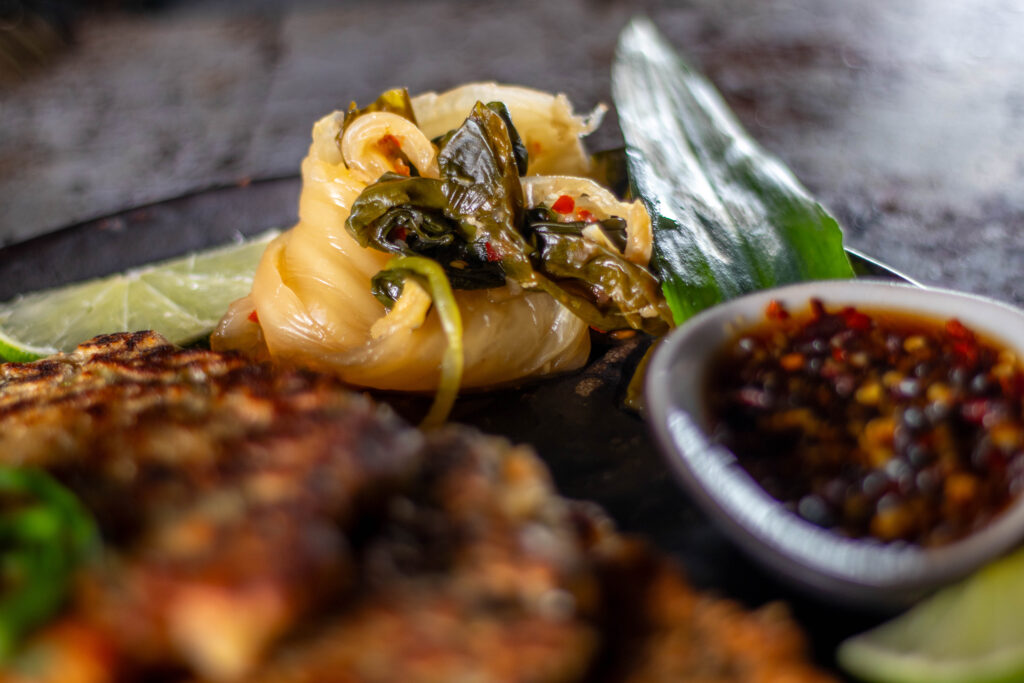
What can I do with kimchi? What recipes can I prepare with kimchi?
Kimchi is an integral part of Korean cuisine and is often served as a side dish to main dishes. However, there are also many dishes in which it is used as an ingredient. For example, kimchi can also be used as a main ingredient in dishes such as kimchi pancakes, kimchi fried rice, kimchi ramen, or kimchi udon noodle dishes.
Due to its unique flavors and health benefits, kimchi has now spread around the world and is enjoying great popularity. Naturally, people are also experimenting with kimchi as an ingredient in dishes that aren’t typically Korean, such as kimchi burgers or my vegan Kimchi Mac’n’Cheese, Kimchi Macaroni and Cheese.
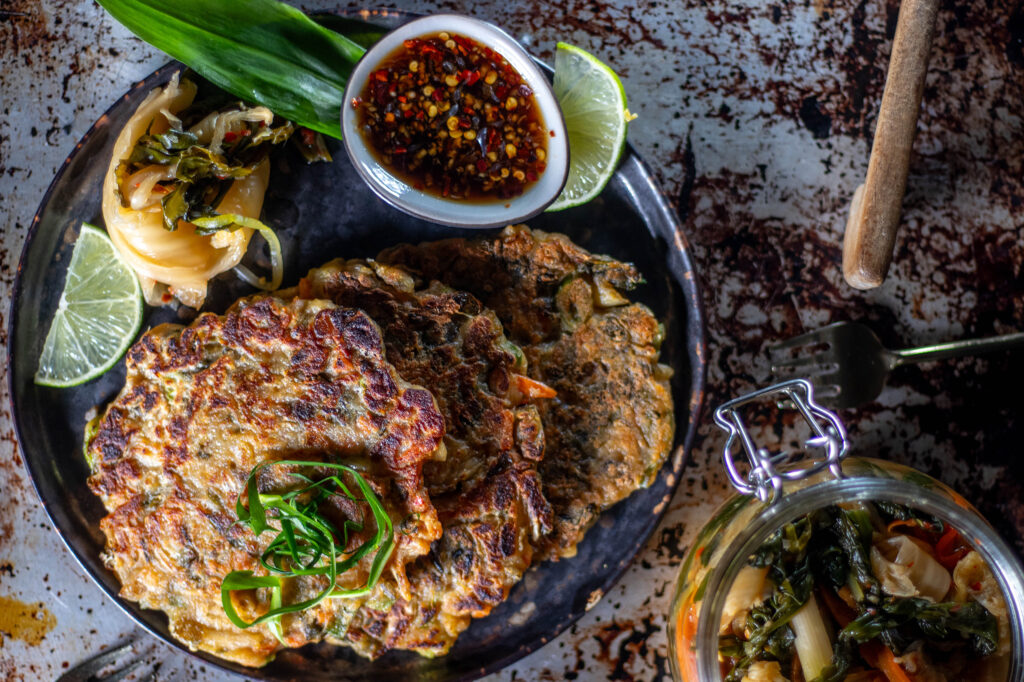
Prepare your own kimchi
Through the fermentation process, kimchi develops its characteristic spicy and slightly sour flavor. Lactic acid fermentation, which occurs through natural bacteria, is essential for preserving the vegetables. It also gives it its probiotic properties, which are very beneficial for digestion and overall health.
Since making kimchi is relatively easy, it’s definitely worth making it yourself.
Then you can adjust the ingredients to suit your individual taste. Like I did here with my wild garlic kimchi.
Homemade kimchi is also very inexpensive, whereas good store-bought kimchi is very expensive.
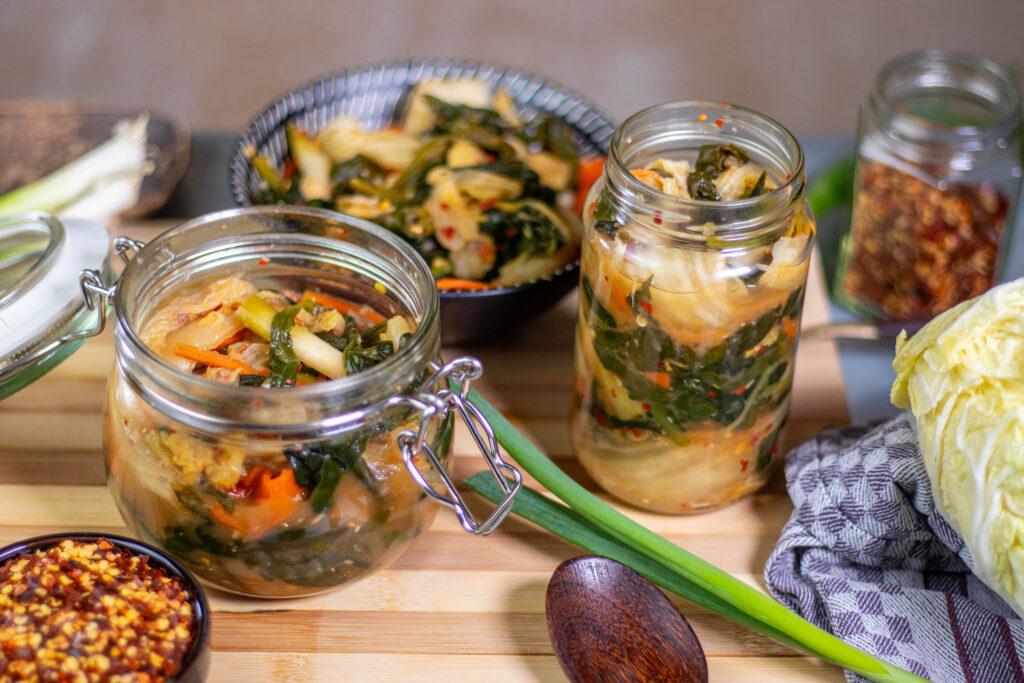
Kimchi: My recipe is vegan and simple
Preparing kimchi is an art form in itself and can vary from family to family and from region to region. The basic ingredients are usually Chinese cabbage, Korean radish, salt, garlic, ginger, chili, and fish sauce. There are now also many vegan versions without fish.
These ingredients are sometimes processed into a paste, which is then massaged into the other prepared vegetables. The vegetables are then fermented in containers for several days to weeks, depending on personal taste.
This may sound very complex at first, but it’s actually relatively simple. Just follow my recipe below and pay attention to the hygiene instructions, and homemade kimchi will be very easy and requires little effort. You just need a little patience for the fermentation time and don’t forget to press down the kimchi in it’s container once or twice a day.
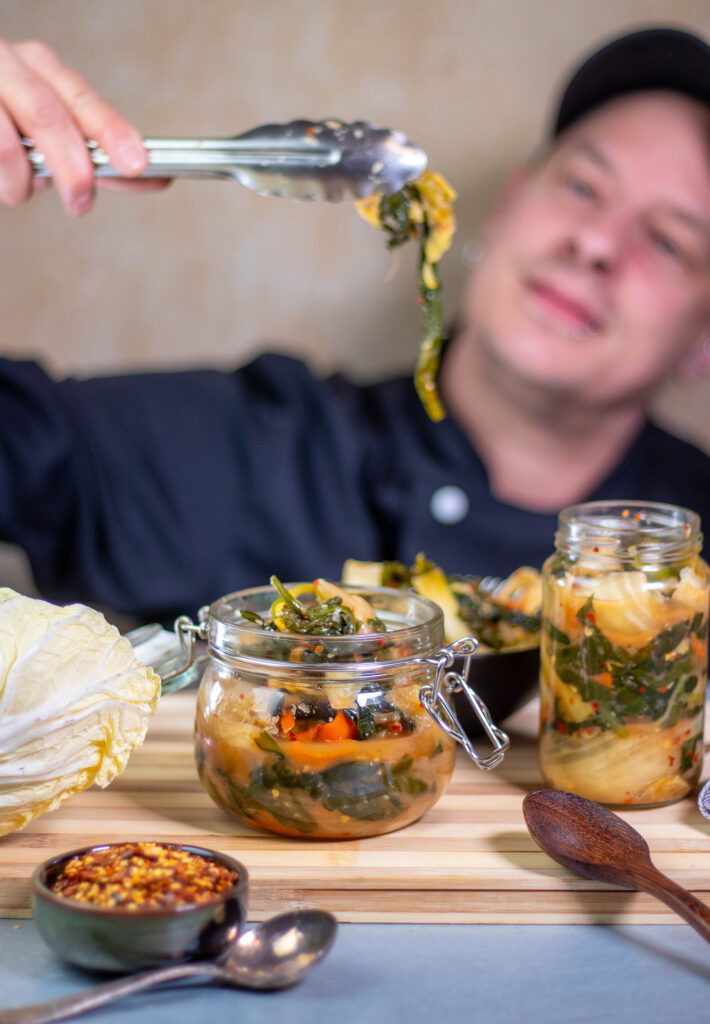
Wild Garlic Kimchi Is Very Healthy
My wild garlic kimchi and regular kimchi are popular not only for their taste, but also for their health benefits. It is rich in fiber, vitamins, and minerals and also contains probiotic bacteria that can promote gut health. Kimchi also has antioxidant properties and can have anti-inflammatory effects.

General information on fermentation:
There are several ways to ferment vegetables or fruit. Kimchi uses one of the easiest methods to implement: lactofermentation.
Lactofermentation is fermentation in brine, where natural lactic acid bacteria perform the fermentation.
The lactic acid bacteria provide the sour, fermented flavor. A useful fact about lactic acid bacteria is that, unlike many bacteria, they tolerate salt. Therefore, salt is used in this type of fermentation; it not only contributes to the flavor but also protects the food from spoilage.
This is how sauerkraut is also made, for example.
Lactic acid bacteria are found everywhere in the environment, so they are vegan and are not derived from milk. They were just first discovered in milk, hence the name.
Hygiene is particularly important during fermentation, because we want only the good bacteria to work for us and avoid mold and germs. So only use clean surfaces and wash your hands thoroughly. Your kimchi container must also be very clean; it’s best to rinse it with boiling water shortly before use.
It’s also important to use organic vegetables to ensure they’re free from pesticides that could potentially inhibit fermentation.
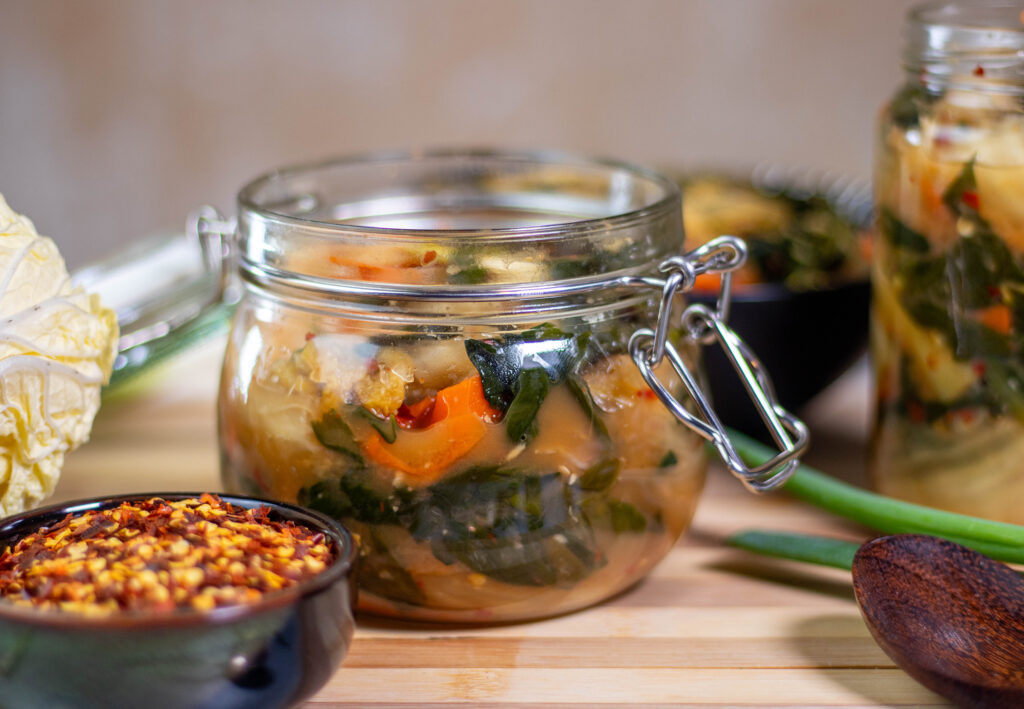
More recipes for ferments and recipes with fermented ingredients:
Why not try these fermented recipes?
- Vegan Kimchi, traditional
- Fermented garlic – spicy, perfect for refining many dishes
- Vegan cheese dip – tasty, stringy, simply the best recipe
- Vegan Kimchi Mac’n’Cheese, Kimchi Macaroni and Cheese
- Potato cheese – vegan cheese without nuts – can be grated
- Ricotta – my vegan 5 minute recipe
- Moxshire Cheese – tangy vegan cheese – it’s firm and it melts
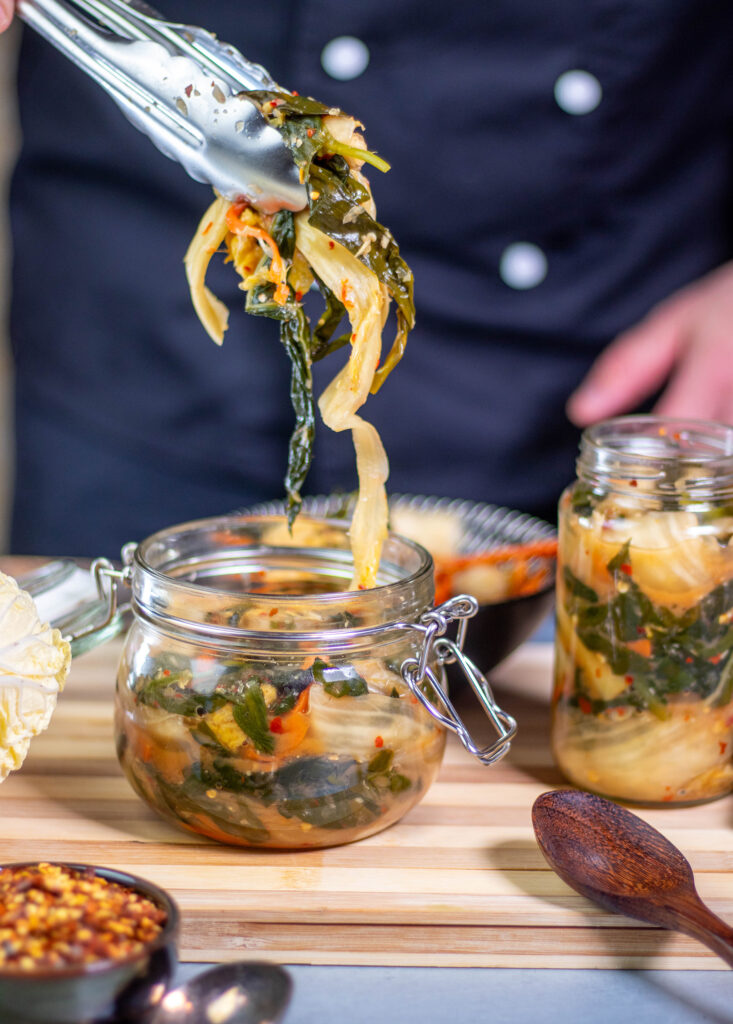
More recipes with wild garlic
Do you love wild garlic as much as I do? Then I recommend these recipes, right here on Daily Vegan:
- Wild garlic paste – preserve the taste all year round
- Wild garlic oil: capture the aroma of wild garlic in bright green oil
- Green waffles – wild garlic & spinach waffles – plus dip & asparagus

Show me your Wild Garlic Kimchi
Please follow me on Instagram or Facebook. Don’t miss out on any new recipes and other Daily Vegan news!
And I’d love it if you made my kimchi recipe and posted a photo of it, tagging my account. Because I always find it really fun and exciting to see how my recipes are prepared in other kitchens!
Wild Garlic Kimchi: Preparation in Pictures
Before you get started, you can see how wild garlic kimchi is made in pictures.


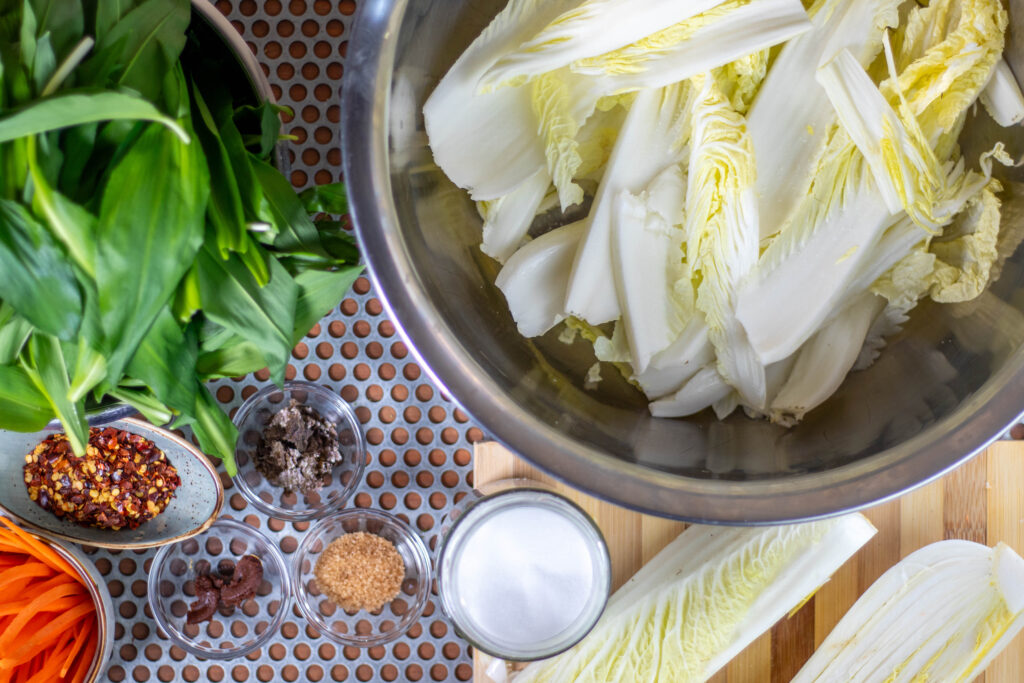

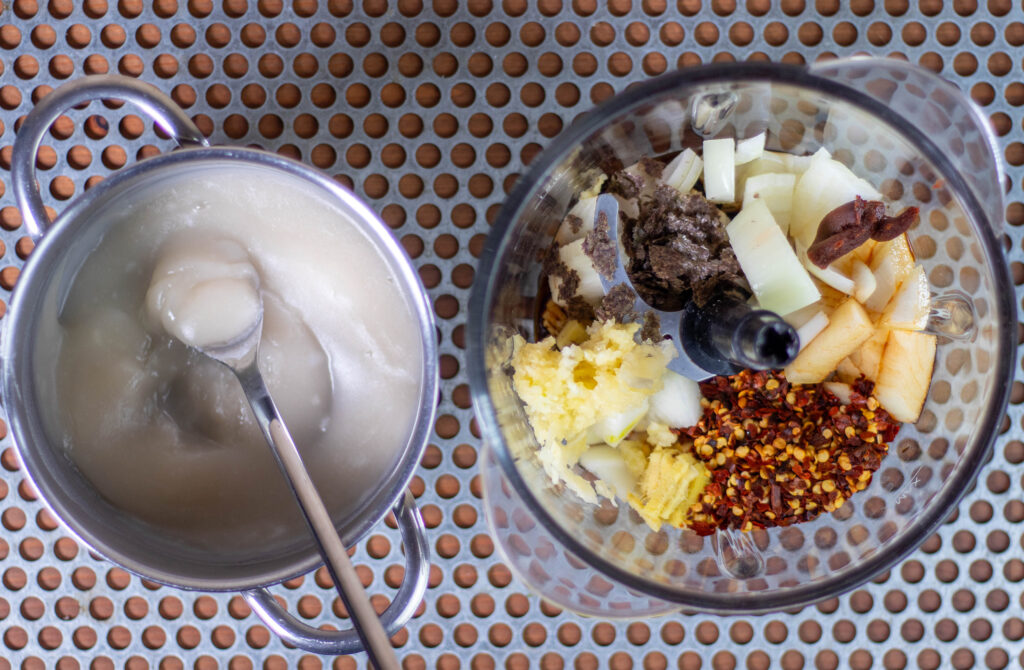

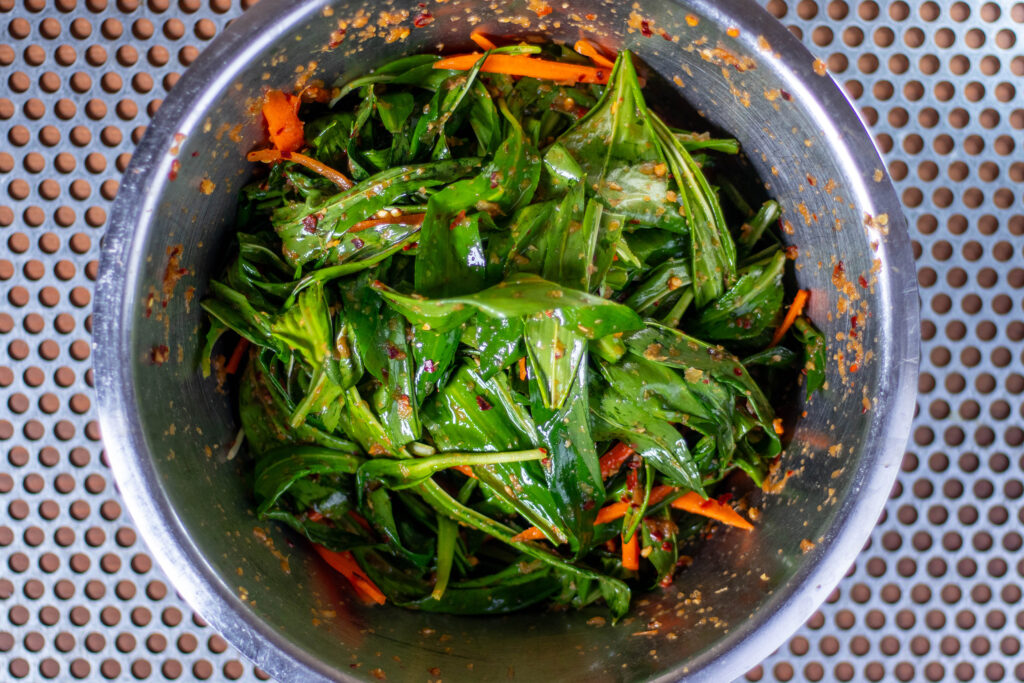
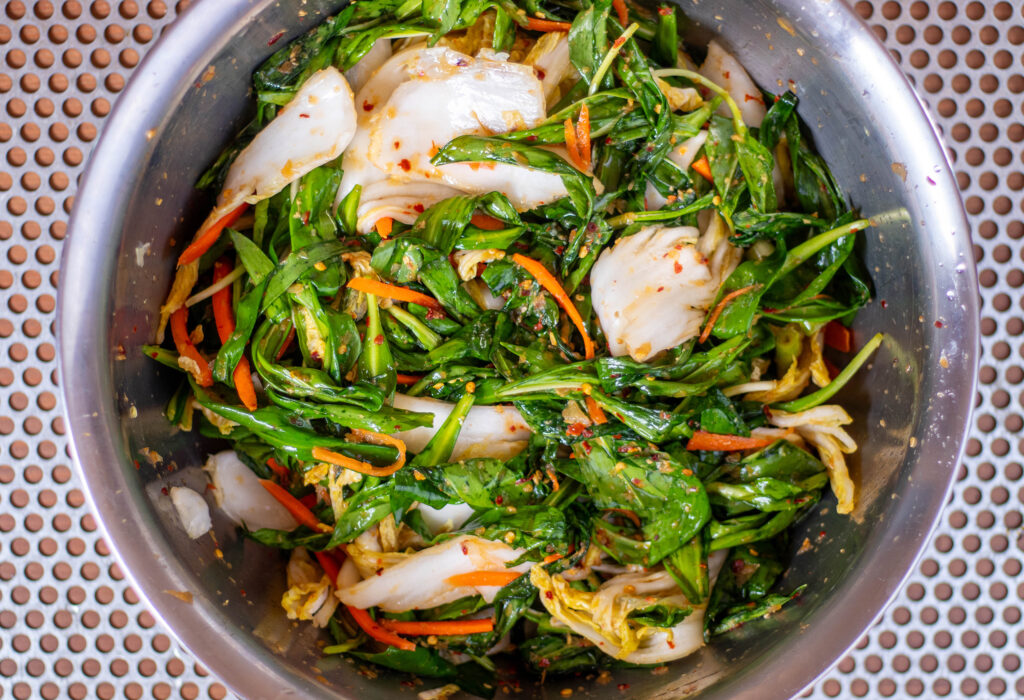
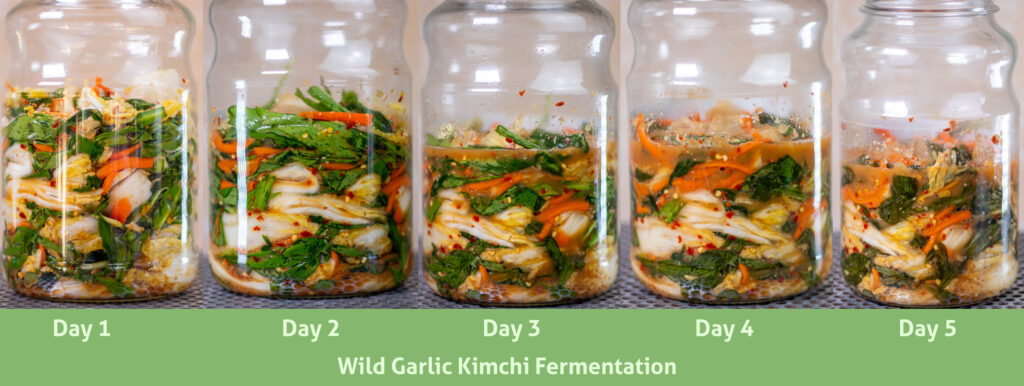
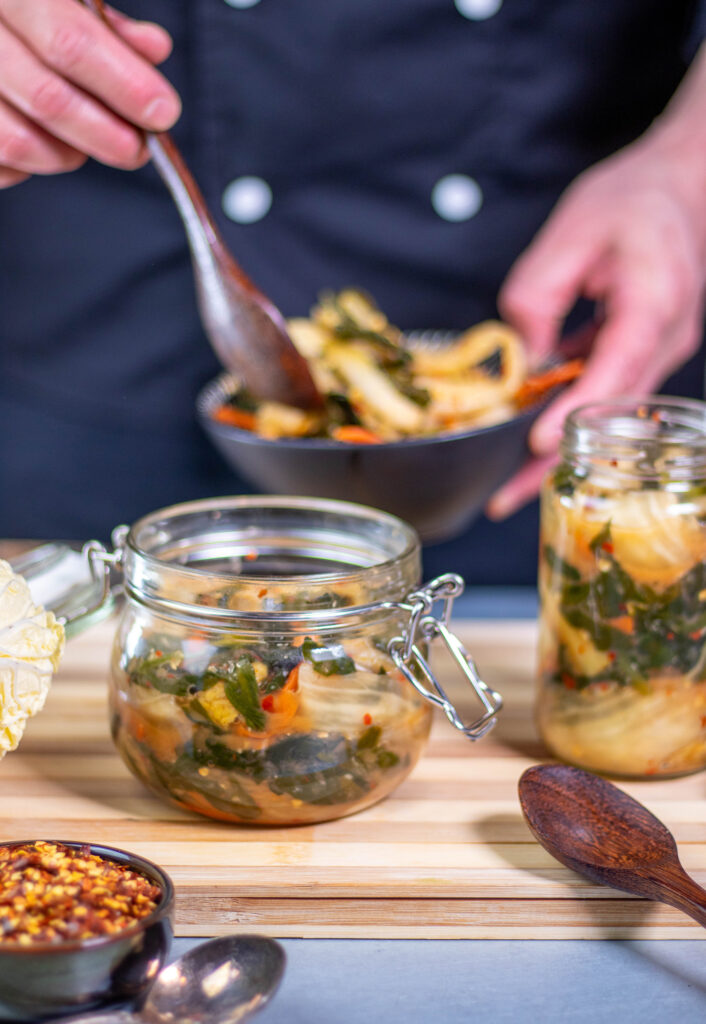
Ingredients for approximately 1 liter of wild garlic kimchi:
200 g wild garlic
1 medium-sized Chinese cabbage, organic
1 organic carrot, peeled, julienned
5 organic spring onions, sliced
1 heaped teaspoon rice flour
100 ml water
1 teaspoon cane sugar
1 onion, roughly chopped
3 garlic cloves, peeled
1 thumb-sized piece of ginger, roughly chopped
2 heaped teaspoons nori flakes
3 tablespoons soy sauce (gluten-free if needed)
1 teaspoon light miso paste
5 heaped teaspoons chili flakes
Uniodized salt
Preparation:
Prepare and ferment the wild garlic kimchi:
- Quarter the Chinese cabbage lengthwise and separate its leaves.
- Then sprinkle them thoroughly with sea salt and stack them on top of each other in a large bowl.
- Lightly knead the salted Chinese cabbage leaves.
- Let them soak for a total of 2-3 hours, until the cabbage has softened and absorbed the water thoroughly. Turn the salted Chinese cabbage every 30 minutes.
- To make the kimchi seasoning paste more pliable, I make a roux of rice flour and water.
- Stir the rice flour into 100 ml of cold water.
- Bring to a boil in a small saucepan and simmer, stirring, until a thick sauce forms.
- Then stir in the cane sugar.
- Let this rice sauce cool completely.
- Place the onion, garlic, ginger, chili flakes, and nori flakes in a food processor with the soy sauce and miso paste. Finely chop or puree until a smooth seasoning paste is formed.
- Add the rice flour sauce to the seasoning paste and puree again.
- Using your hands, knead the wild garlic, carrot strips, and spring onions into the seasoning paste. It’s best to wear rubber gloves doing so, as otherwise the chili will stick to your fingers, which you’ll notice the next time you rub your eyes, even if you wash your hands.
- After the Chinese cabbage has soaked in salt, drain the salted water from the cabbage, reserving the water.
- Wash the cabbage thoroughly under cold water and, if desired, cut it into bite-sized pieces. I usually leave it whole.
- Now mix the cabbage leaves with the seasoning paste and its other ingredients, as well as the reserved cabbage water. Knead everything well.
Geotjori:
- The unfermented kimchi is now ready to be bottled. In Korea, it’s called geotjori in this state and is often eaten with rice. Feel free to try it now or set aside a small portion. Geotjori is a delicious side dish for Asian dishes.
Fermentation time for wild garlic kimchi:
- Now pour the wild garlic kimchi into a screw-top jar or kimchi container. Press the vegetable mixture firmly into the container to expel any air bubbles.
- Place the lid on the container, but don’t close it tightly. When the kimchi begins to ferment, air must be able to escape.
- Let it stand at room temperature for 4-7 days. From the third day onwards, taste occasionally whether the kimchi is strong enough for you.
- During this waiting period, press down on the kimchi 1-2 times a day. To do this, press down on the cabbage with a clean spoon so that any air bubbles that form can escape.
- Once the wild garlic kimchi is to your tasting, seal the container tightly and store it in the refrigerator. It will keep for several weeks to months and can be enjoyed again and again.
Enjoy!
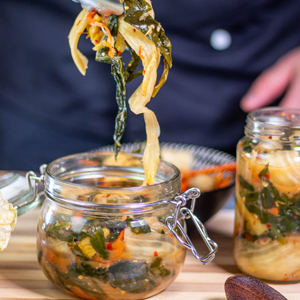




 Based on 19 Review(s)
Based on 19 Review(s)



